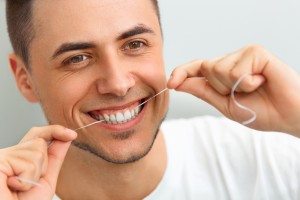 Beauty may be in the eye of the beholder, but everyone knows that with matters of the mouth, the teeth have a lot of bite. In all aesthetics, dental or otherwise, there is an interplay of these four characteristics: aesthetics are:
Beauty may be in the eye of the beholder, but everyone knows that with matters of the mouth, the teeth have a lot of bite. In all aesthetics, dental or otherwise, there is an interplay of these four characteristics: aesthetics are:
- Shape
- Color
- Size
- Position
Pearly whites all lined up nicely are the ideal. But there are many dental issues involving any one of these characteristics or a combination thereof that can make one’s mouth an eyesore.
Black Triangles
In this dental dilemma, one’s mouth appears to have tiny black triangles around the teeth. At issue is gum tissue, which is receding a bit much. It creates a space under the gumline and between two teeth. The space is in the shape of a triangle and since it’s just space—not a colored object—it appears dark, or black.
Black triangles are fairly common, occurring in two-thirds of adults, some studies say. It is a normal progression of moderate gum disease. However, all that can get more serious very quickly. That’s one reason why several very serious mitigation measures—from surgery to tissue engineering—can be employed by your dental care team.
This article is about easy solutions, though. And here are a few, ranked in order of “ease.”
- Preventive care—While gum disease has a genetic component, the intensity of one’s gum problems is determined more so by hygiene, like brushing and flossing regularly. There is also a benefit to using a water pick and brushing slightly along the gums.
- Gingival veneers—A removable little mask in the color of your gums can be a cost-effective, but temporary, covering. If you are a stickler for regular optimal dental hygiene, this could be a solution for you.
- Orthodontic work—Misalignment can impact the appearance of black triangles, orthodontics repositions teeth, taking black triangles away.
Stained Teeth
The most common color conundrum when it comes to teeth beauty is a stained or yellowish appearance. But black, brown, gray, purple and even white (fluoride spots) can appear when the conditions are right—or wrong. Before any simple treatment is implemented, it’s best to understand that discoloration has three basic types of causes:
- Extrinsic—caused by something from the outside coming into contact with your teeth; for example, wine or tobacco.
- Intrinsic—caused by something from the inside of your teeth or body; for example, damage to the nerve and bones due to trauma or impact
- Age-related—caused by years of usage
Let’s focus on the simple solutions that keep your teeth reasonably white and bright. First, it’s all about prevention. Know the foods—both less healthy (soda, coffee) and more healthy (beets, blueberries)—that cause discoloration and practice good dental hygiene. In addition to brushing and flossing, using an antibacterial mouthwash daily can go a long way.
If prevention is a little too little, a little too late, then it’s time for a perusal of the over-the-counter whitening agents. They’re not as powerful as the in-office whitening procedures your dentist likely offers, but they may be strong enough to get the job done on your teeth. In fact, they might make your teeth sensitive, but this side effect usually goes away after the bleach has kicked in.
Chipped Teeth
It’s fair to say for a chipped tooth, there is no “easy” solution. Bonding comes the closest, since it’s what dentists use for small chips. Bonding is when resin is placed over your tooth to create a mold that gets shaped to fit the chip and appear as part of the tooth.
Bonding may sound multistep and tricky, but it’s considered a simple cosmetic procedure that looks great and costs little compared to solutions like veneers, crowns or dental implants. Let’s be clear: If the chip is large or severe, you’ll need to upgrade your solution.
Before you decide which tooth repair path to take, you’ll have gone to your dentist to discuss details. But dentists offices are not emergency rooms, so be prepared to take the initial First Aid steps at home.
Here are some helpful steps:
- For extreme pain or persistent bleeding, visit the emergency room.
- For immediate care, rinse with a mouthwash thoroughly. It will cut down on any chance of infection and it will increase the chance all the chip fragments have flushed away
- For moderate pain, take over-the-counter pain medication
Misaligned Teeth
“I have taken out my Invisalign and this is the album,” pop star Billie Eilish says at the beginning of her Grammy-award winning album from last year, before she sings her hit song “Bad Guy.” That’s how commonplace invisible braces have become for fixing adult teeth that are misaligned. In addition to Invisalign, there are a number of other reputable brands. What they all have in common is the ability to put them in and take them out as needed. They also share a reasonable but significant price tag, and are often the same price as braces.
If you have dental insurance, chances are this sort of treatment is partially covered. And that is beautiful to any purse or wallet holder.







Leave a Reply